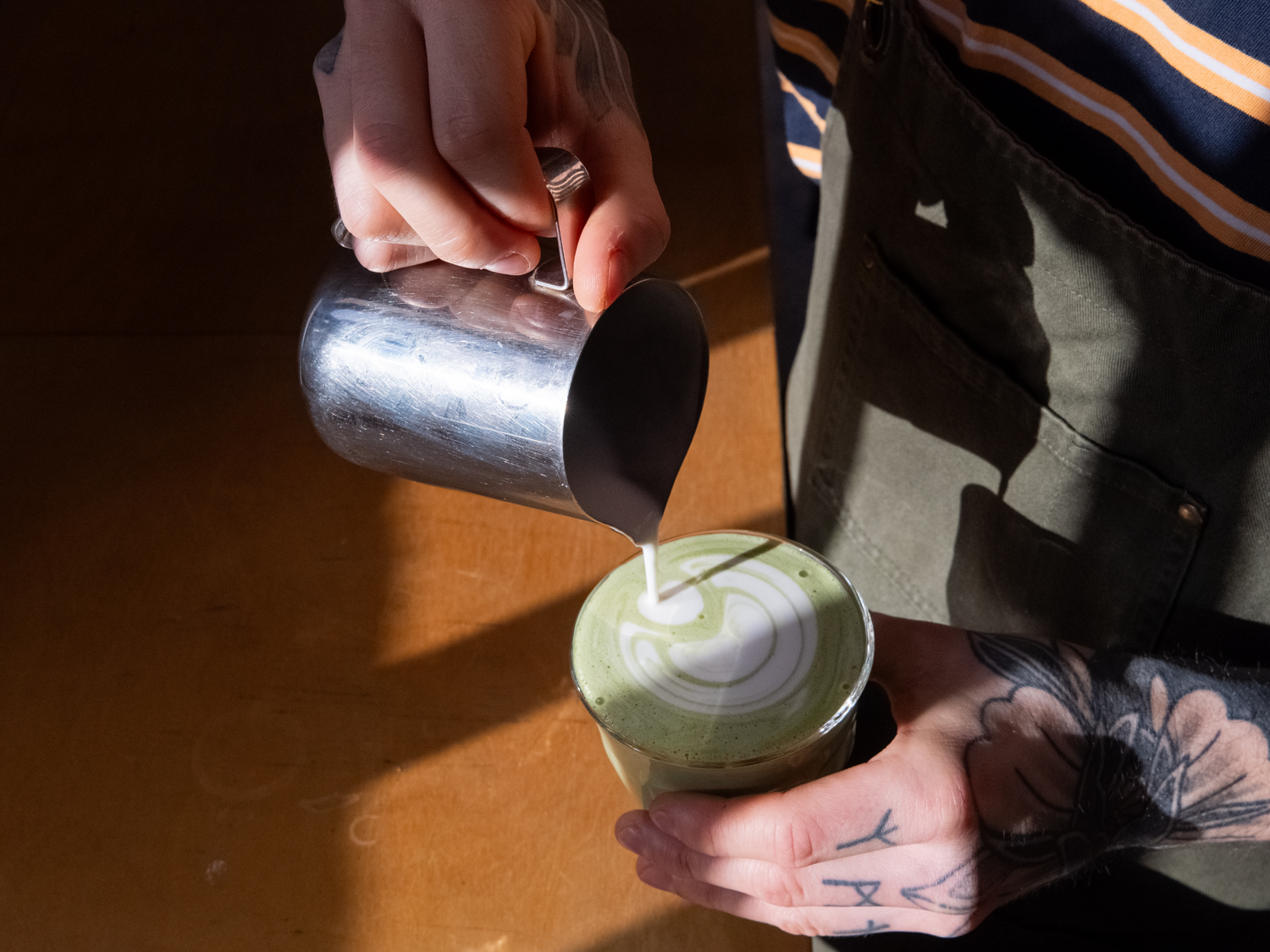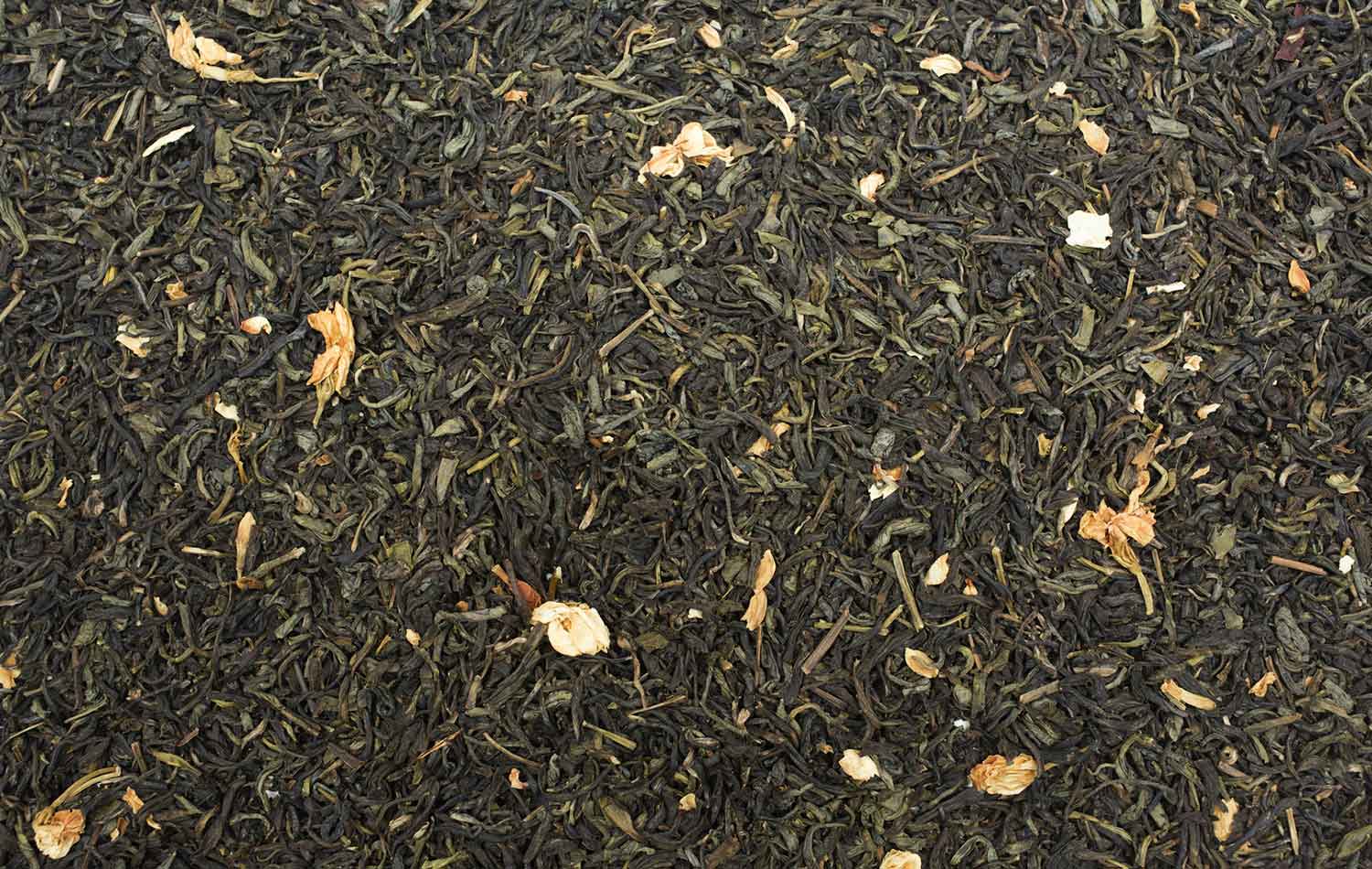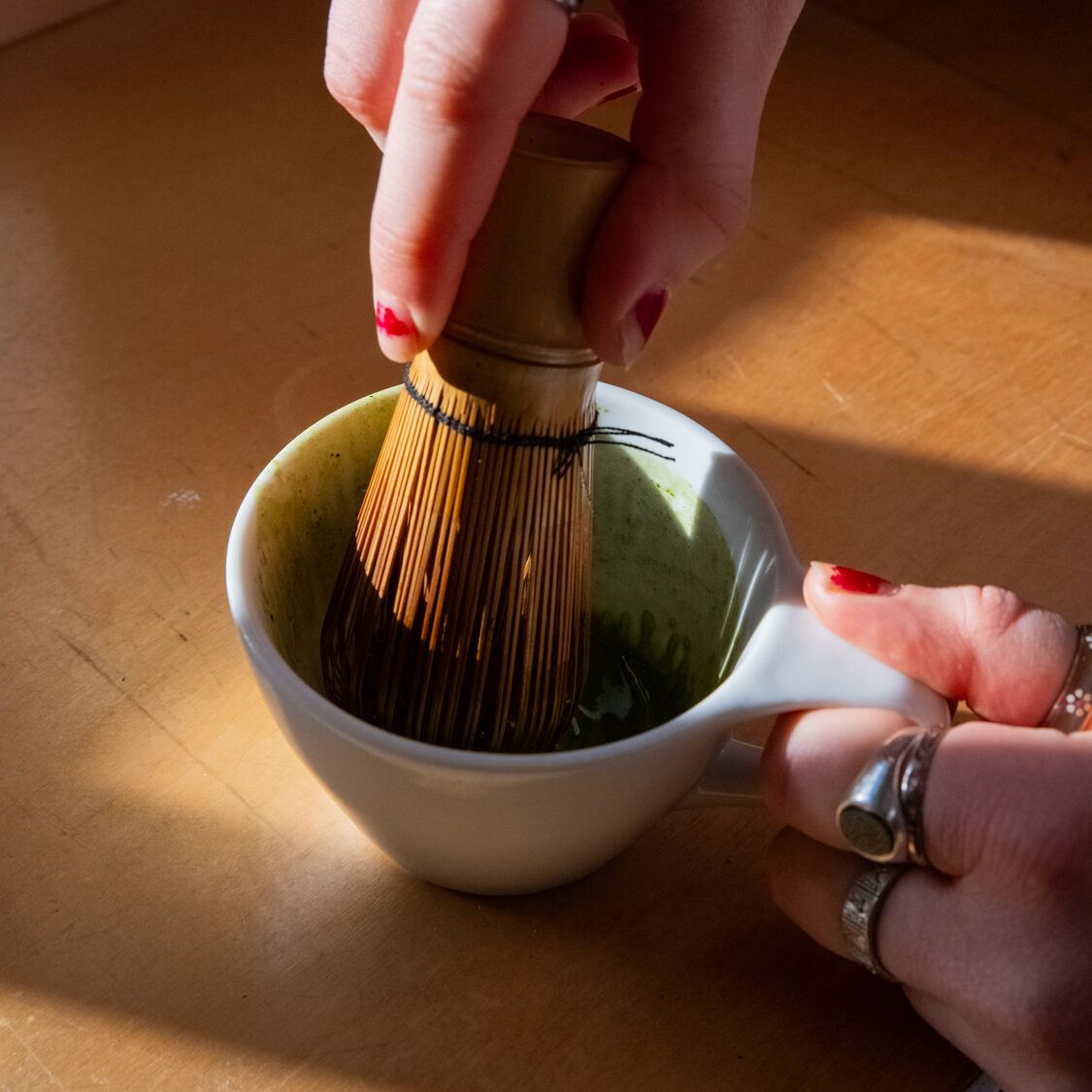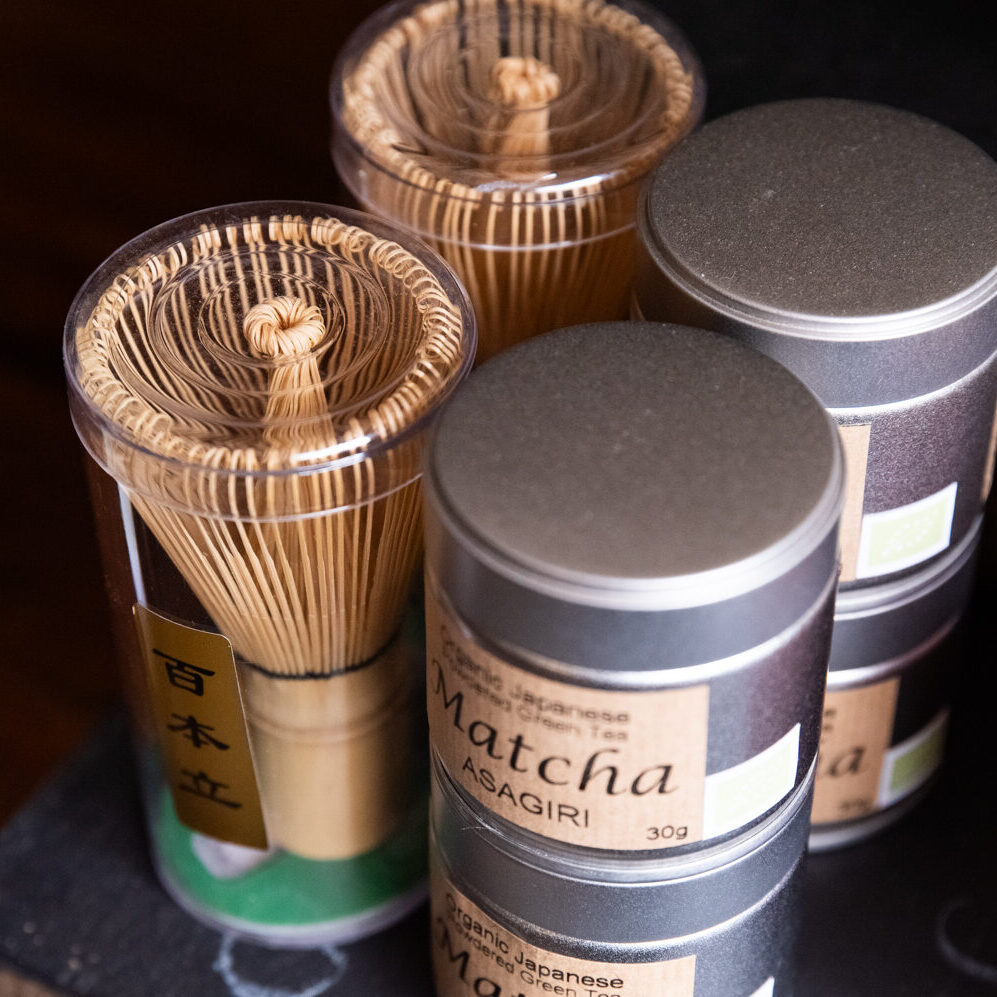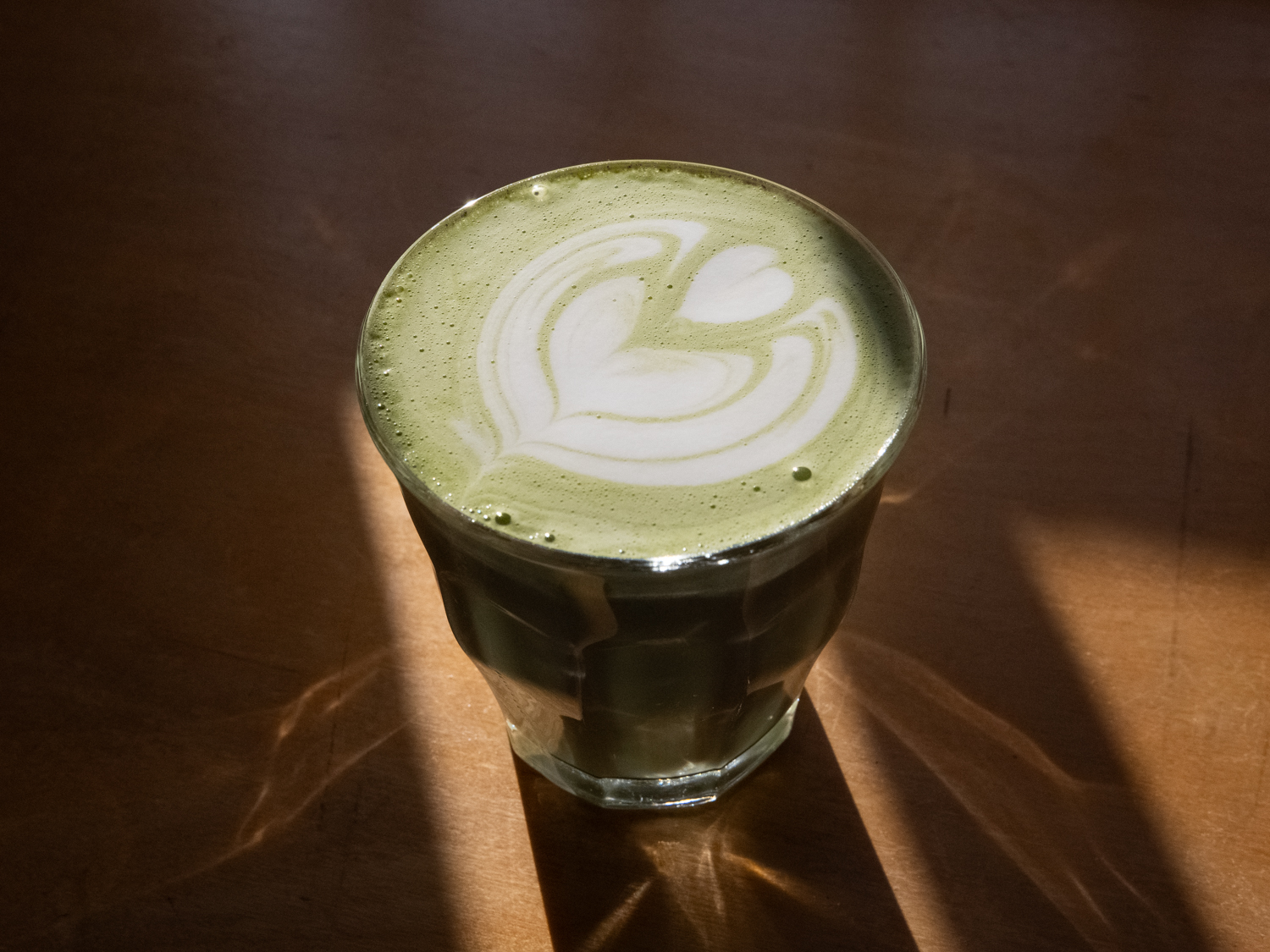AN EXPLORATION OF TWO ANCIENT TEA CULTURES
Matcha and Green Tea
Though each with their own distinct differences, Matcha and Green Tea in fact both originate from the Camellia Sinensis plant. From the large, withered leaves of green tea to the vibrant green powder of matcha, meticulous processing methods and age-old brewing techniques all play a part in creating the complex flavours profiles found in each.
Green Tea: Origin and Process
Green Tea can be traced back to China, 2737BC, and is now widely grown in China and Japan mostly, as well as lesser-known origins of India, Sri Lanka, Taiwan, Bangladesh and New Zealand. After picking, the vibrant leaves are quickly pan fried or steamed to destroy enzymes, and therefore halt any oxidisation process that other teas, such as Assam, would go through.
This this then leads to a fresh, zesty, and crisp flavour that associates with a quality green tea. Following this, the leaves are then rolled into shapes, which can vary based on type of green tea, such as the tightly bound, hand rolled Jasmine Pearls
Matcha: Origin and Process
Matcha, widely grown in both China and Japan, is shade grown. The covered plants are hidden from sunlight for 20-30 days prior to harvest, improving chlorophyll and amino acid production. Once they are picked, they are steamed and dried to prevent oxidisation and retain their vibrant emerald colour and sweet flavour. With Ceremonial Grade matcha, the leaves are harvested at the end of April, to the beginning of May, know as the Spring Harvest or First Flush. The leaves picked are younger and softer, resulting in sweetness, and any potential bitterness from stems or veins are removed.
The leaves are then ground into a fine powder, a traditional method using large granite stone wheels – a process that can take up to an hour for a 30g yield. The bright green appearance of Ceremonial Grade Matcha is another sure sign to tell it apart from lower quality grades of matcha, which can be dull with more earthy tones.
Fine, vibrant Matcha powder is one indicator of Ceremonial Grade
Green tea is brewed in a similar fashion to any loose-leaf tea, however there is a key difference in temperature, with green tea requiring water between 65-80 degrees. The leaves are less oxidised; therefore, this lower temperature retains their unique and distinct flavours which can be masked by bitterness an astringency when over extracted higher water temperatures. The leaves are strained, and the resulting cup can range from clean, fresh, and bright- typically Japanese Green- to earthy, umami and citrussy – typically Chinese Greens.
Matcha is brewed entirely differently; the finely milled powder is dissolved in water with a traditional method in Japanese culture, done at sacred Japanese Tea Ceremonies (ochakai). A chashaku – bamboo tea scoop – can be used to measure 2g of matcha, which is then whisked with 60-70g of water using a chasen – bamboo whisk – to remove any clumps. Ceremonial grade matcha is traditionally used in these tea ceremonies, which is higher in quality and more nuanced in flavour and sweetness.
Culinary grade matcha is lower in both quality and price, often used in baking and adding to milky drinks. Many cafes now offer Ceremonial Grade Matcha as a base for their milk based drinks. Both iced and warm, they celebrate the high quality, umami flavour of matcha combined with regular and plant-based milk - there has been a huge growth of matcha based drinks in our three cafe locations.
According to the World Green Tea Association (2018), Green tea consumption has risen by 20% worldwide. This huge rise follows suite with a rising knowledge of Matcha’s health benefits, as well as an increase of matcha based drinks on cafe menus, namely Matcha Lattes.
It is thought to have more than 137 times the number of antioxidants than steeped green tea - such as the antioxidant Epigallocatechin Gallate (EGCG) - mainly because all the tea leaves are consumed rather than the infused water from regular green tea. There is evidence to suggest that matcha supports the immune system, regulates blood sugars, boosts metabolism, and supports cardiovascular health.
Matcha has more caffeine than green tea, however unlike the regular peaks and troughs of energy levels we see with regular caffeine consumption, matcha promotes more sustainable energy over a longer period, reducing those sudden caffeine crashes. Moreover, the combination of caffeine and L-theanine is known to induce a calm and focused energy.
Brewing at home is accessible and affordable; green teas can be brewed in any teapot with water just off the boil - although a temperature controlled kettle will ensure more accurate water temperature for delicate brewing. Matcha can be made in a small bowl and a bamboo whisk is a must when making traditionally, to ensure it is free from lumps and a frothy vibrant green mix. Top up with hot water for the ceremonial tea experience, or steamed milk for a Matcha latte.
Matcha and Green Tea start from the Camellia Sinensis plant and end as hugely different drinks – this is testament to how much the location, growing conditions, processes and brewing techniques effect the overall taste, texture, and appearance of the end result. Equally rich in complexities, heritage, and culture, both drinks warrant their own unique celebration and exploration alike.
